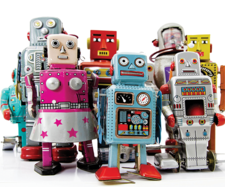Artificial intelligence on the Raspberry Pi
Learning Experience

© Lead Image © Charles Taylor, 123RF.com
You don't need a powerful computer system to use AI. We show what it takes to benefit from AI on the Raspberry Pi and what tasks the small computer can handle.
Artificial intelligence (AI) is on everyone's minds, not least because of chatbots and the ChatGPT text generator. Of course, the capabilities that AI has developed go far beyond chats with a chatbot on countless websites. For example, AI can be used to process acoustic speech signals, and it is the precondition for autonomous driving. Some applications – and generating AI models – require computers with powerful processors and a generous helping of storage space and RAM. Small computers like the Raspberry Pi, on the other hand, are more likely to benefit from ready-made methods and applications that draw on AI for their implementation.
All of these processes are founded on machine learning (ML), which itself is based on self-adapting algorithms that process information from reference data. Deep learning, as a subset of machine learning, uses artificial neural networks that comprise multiple hierarchical processing layers. The neurons of the network are interconnected in multiple ways, with the individual layers increasingly abstracting the reference data they receive. Solutions or actions are then derived from the results.
TensorFlow
TensorFlow [1], released by Google AI in 2015, is an open source framework that aims to simplify the development and training of deep learning models. It supports numerous programming languages and can be used for various purposes, such as the linguistic data processing in various Google services. It can also be used to recognize and classify patterns and objects in images.
[...]